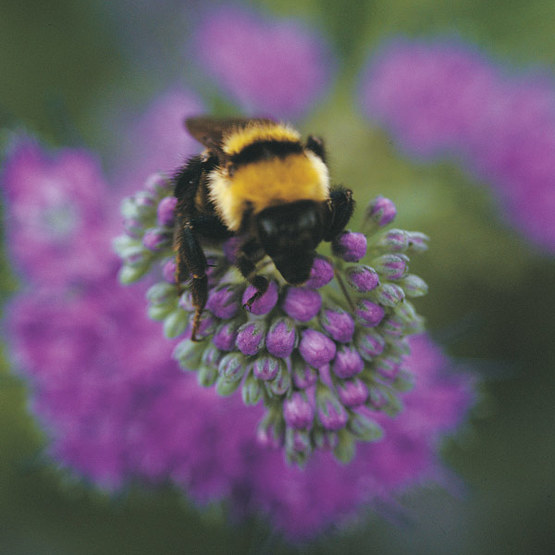
My garden would be a poorer place without the buzz of bumblebees busily working the blossoms. Is it the bumblebee’s lack of grandeur or its ubiquitous presence that makes gardeners neglect this tireless laborer? Whatever the reason, these fat, fuzzy buzzers deserve to be nurtured and cheered for their faithful work on the gardener’s behalf. And with the honeybee population being mysteriously decimated, other pollinators like bumblebees provide an underappreciated service we can no longer take for granted.
I welcome bumblebees to my garden by planting the flowers that I know they like to feed on. To provide a steady food source for bumblebees in my garden, I provide blooms during their active period from March to October, stretching their food supply throughout the growing seasons. In addition, I eschew insecticides because bumblebees are sensitive to all of them. In fact, I rarely use anything stronger than insecticidal soap to combat pests, preferring to forgo any plant I can’t grow without chemicals.
Fragrances, shapes, and colors lure bumblebees
Bumblebees are drawn to flowers by sight and by smell, and recent research indicates that they have internal compasses that guide them back to choice feeding sites. The bumblebees that frequent my gardens are especially fond of flowers on spikes, like salvia and lavender, but they also feed on nectar and collect pollen from daisy-type flowers, like zinnias. In addition to flower shapes, masses of bright-colored blooms attract bumblebees better than individual flowers. Many of the flowers they choose in my garden are blue, purple, or white, but I don’t discount orange, yellow, and red. Most bright colors will do the job. Lastly, bumblebee-attracting flowers must be stable enough to support the weight of these hefty pollinators.
More on attracting wildlife
Hummingbird Favorites
by Sally Roth
Find out what all the buzz is about by planting these colorful perennials. Read the article.
Bats Are a Gardener’s Best Friend
by Dennis Ferraro
Bats may look scary, but they help the gardener in many ways. Here’s how to attract them to your yard. Read the article.
Satisfy young bumblebees with early-spring delights

I wonder which of us—myself or the bumblebees—hungers more for the first flowers of spring? In March, bolting kale, overwintered from an August sowing, provides spring’s first produce for both of us. I harvest half of the buds and tender stems of this early-spring delicacy, and I leave the rest to open their daffodil yellow flowers and become waving banners for hungry bees. When they race to greedily gather the kale’s pollen, it is a sure sign that winter is giving way to spring.
The small, densely clustered flowers of Chinese forget-me-not (Cynoglossum amabile, USDA Hardiness Zones 5–8) often prove to be among the bumblebees’ spring favorites. In early March, I sow its seeds in my greenhouse, then transfer the seedlings to the border in mid-April. Spray after spray of cloisonné blue blossoms on 20-inch-tall stems continue to bloom throughout most of May and June. Swarms of bees work the plants daily from early morning until evening, producing a constant hum of busy activity. Chinese forget-me-not suffers once the summer heat sets in, so I pull the plants out in early July.
By June, my garden has become a feast for bumblebees. The pale purple spikes of anise hyssop (Agastache foeniculum, Zones 4–11) grace my border for months. I like the licorice flavor as much as the bees do, so I snack with them on the tender, sweet blossoms. In mid-May, before they come into bloom, I cut these plants back by half to produce sturdy, 2-foot-tall spikes that stay upright all season.
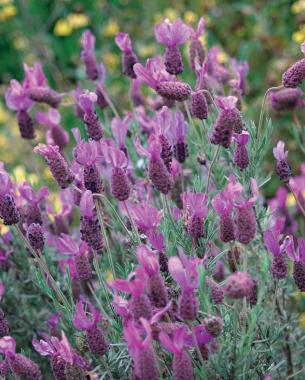
Although short-lived in my heavy soil, the blossoms of lavenders (Lavandula spp. and cvs., Zones 5–9) vibrate with bumblebees during the plants’ four-week bloom season. Their fragrance is what entices the bees, of course. I increase the drainage for lavenders by working pea gravel into the soil and setting the plants in a raised mound.
Gauras (Gaura lindheimeri and cvs., Zones 6–9) are proven favorites of bumblebees that produce white or pink flowers on wispy, 30-inch-tall stems every morning in June and again in August after a midsummer rest. The delicate blossoms provide breakfast and lunch for the hungry bees before wilting in our strong afternoon heat. Like lavenders, gauras benefit from improved drainage.
The plant in my garden that causes the most commotion from mid-July until frost is calamint (Calamintha nepeta, Zones 5–9). Dozens of bees swarm daily over its tiny, purple-specked white flowers. This plant is a clumping—not spreading—member of the mint family. It is happy in a double-dug border set on a slope, where it can get by on natural rainfall.
Green Notes: Bumblebees are welcomed guests
• Bumblebees work hard to pollinate many of the fruits and vegetables in home gardens, as well. They are still active when honeybees are hive bound, such as in cold and windy weather.
Stock up on late-summer blooms that are ripe for feasting
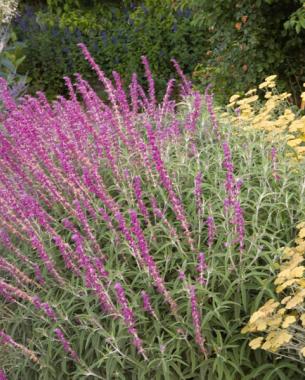
Another noted bumblebee favorite is Joe Pye weed (Eupatorium purpureum, Zones 3–9), whose huge, domed heads of filamentous, grayish pink flowers attract both bees and butterflies when they open in midsummer. This native reaches 8 to 10 feet tall.
My garden is filled with salvias, and I have found that my resident bumblebees have definite preferences. I recommend ‘Indigo Spires’ salvia (Salvia ‘Indigo Spires’, Zones 8–11) for its deep blue blossoms that appear from June until frost, and my bees like bog sage (S. uliginosa, Zones 8–11), as well. On its willowy, 6-foot-tall stems, bog sage produces a fresh crop of exquisite, true blue flowers every morning from mid-June into October. On hot, sunny days, bees frantically gather nectar and pollen before the blossoms are shed by noon.
The inky blossoms of ‘Sunny Border Blue’ veronica (Veronica ‘Sunny Border Blue’, Zones 3–8) attract the bees’ attention during its June-to-frost bloom season. Its upright, 3-foot-tall stems are tightly packed with tiny, pollen-laden flowers. ‘Sunny Border Blue’ consorts with radiant ‘Golden Shower’ coreopsis (Coreopsis verticillata ‘Golden Shower’, Zones 4–9), butter daisy (Melampodium paludosum, annual), and deep blue ‘Zwanenburg Blue’ spiderwort (Tradescantia × andersoniana ‘Zwanenburg Blue’, Zones 5–9) in my blue, yellow, and white border.
Anchoring the corner of this composition is ‘Worcester Gold’ blue-mist shrub (Caryopteris × clandonensis ‘Worcester Gold’, Zones 6–9), whose chartreuse foliage glows in summer. It greens up a bit in August and sends up spikes of pale blue flowers wrapped in whorls around its stems. ‘Worcester Gold’ reaches 3 feet tall by bloom time, layering itself to form a wide patch of color.
Where have all the honeybees gone?
Honeybee populations have declined significantly across the United States, and gardeners have noticed a decrease in bee activity. In many areas of the country, the number of managed hives has declined by more than 50 percent and feral populations are nearly gone. The loss of honeybees has been due primarily to the introduction of two species of parasitic mites in the 1980s: the tracheal mite and the Varroa mite.
A serious new problem called colony collapse disorder (CCD) has been associated with the loss of thousands of colonies in the United States during the past few years. Little is known about the disorder or its causes. Research efforts are underway to determine if CCD is caused by disease, mites, or pesticides or is related to the interaction of several factors.
There is, unfortunately, little that most gardeners can do to offset the loss of honeybees, other than to start keeping bees. The decline in hive numbers due to colony loss has been compounded by a loss of beekeepers: A good number of hobbyists have given up after losing their hives, so the addition of new beekeepers can help reestablish population numbers. For more information on how to keep bees, go to www.ent.uga.edu/bees.
—Richard Fell is a professor of entomology at Virginia Tech.
Sit back and savor fall’s fleeting finale
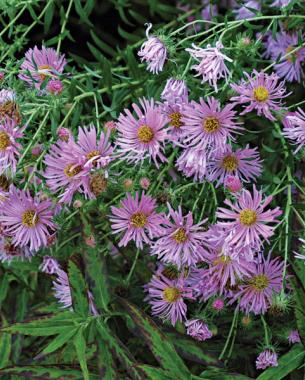
As autumn approaches, bumblebees rely more on the long-blooming salvias and veronicas in my garden and on other fall bloomers to provide food before October frosts cut short their displays. Jewel red pineapple sage (Salvia elegans, Zones 8–11) contributes nectar-laden blossoms beginning with the fall equinox. If frosts arrive late, the bumblebees have time to enjoy the blue-black blooms of Mexican sage (S. mexicana, Zones 8–11), a dramatic late-season bloomer that holds its dark flowers in black bracts.
Goldenrods briefly play host to bumblebees. I grow the clump-forming ‘Fireworks’ goldenrod (Solidago rugosa ‘Fireworks’, Zones 5–9) in my border, though the bees like the fast-spreading goldenrods in my pasture just as well. Aptly named, ‘Fireworks’ forms arching sprays of tiny, golden yellow flowers on 4-foot-tall stems.
Asters stand out in any fall garden. ‘Hella Lacy’ New England aster (Aster novae-angliae ‘Hella Lacy’, Zones 4–8) opens its dark purple blooms to the bees in early fall, while ‘Our Latest One’ New England aster (A. novae-angliae ‘Our Latest One’) provides 5-inch-tall wands of blue-violet blossoms in October as pollen sources become scarce. Both asters and goldenrods like sun and adapt to a wide range of soils.
Working in the garden on cool autumn days, I notice that the frantic hum of summer has slowed to a gentle drone. The bumblebees begin their work once the temperature rises in late morning and settle deep into a sheltering flower blossom at sunset as a chill descends. And I tend the kale I sowed in August so that the bumblebees and I will eat well again next spring.
Fine Gardening Recommended Products

The Nature of Oaks: The Rich Ecology of Our Most Essential Native Trees
Fine Gardening receives a commission for items purchased through links on this site, including Amazon Associates and other affiliate advertising programs.

Pruning Simplified: A Step-by-Step Guide to 50 Popular Trees and Shrubs
Fine Gardening receives a commission for items purchased through links on this site, including Amazon Associates and other affiliate advertising programs.

ARS Telescoping Long Reach Pruner
Fine Gardening receives a commission for items purchased through links on this site, including Amazon Associates and other affiliate advertising programs.

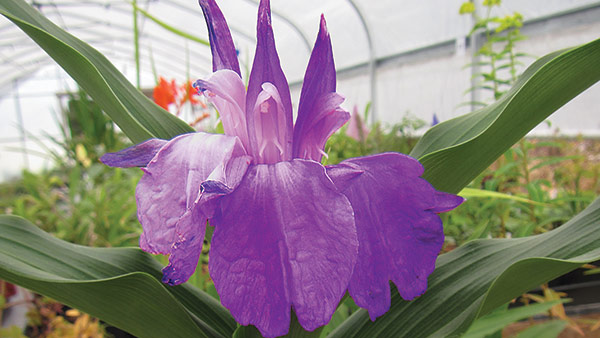
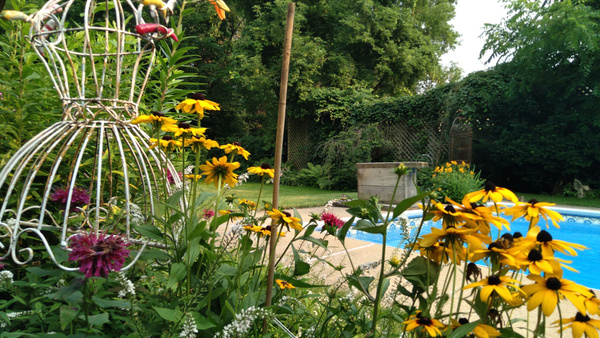















Comments
I would like to add that in my area, zone 8b Texas, Bumblebees are the ONLY pollinators I see on my Morning Glories. They also like the Redbud Trees (cercis Canadensis) which bloom here in late February/early March.
I also recently read that researches have determined that the culprit for hive decline IS pesticides, having found multiple numbers of pesticides in the dead honey bees.
Log in or create an account to post a comment.
Sign up Log in